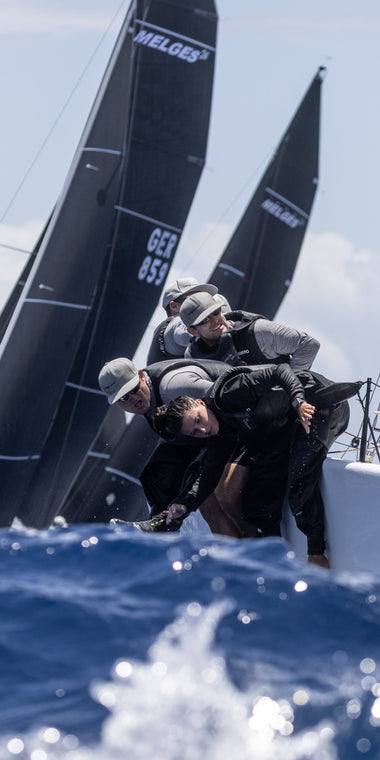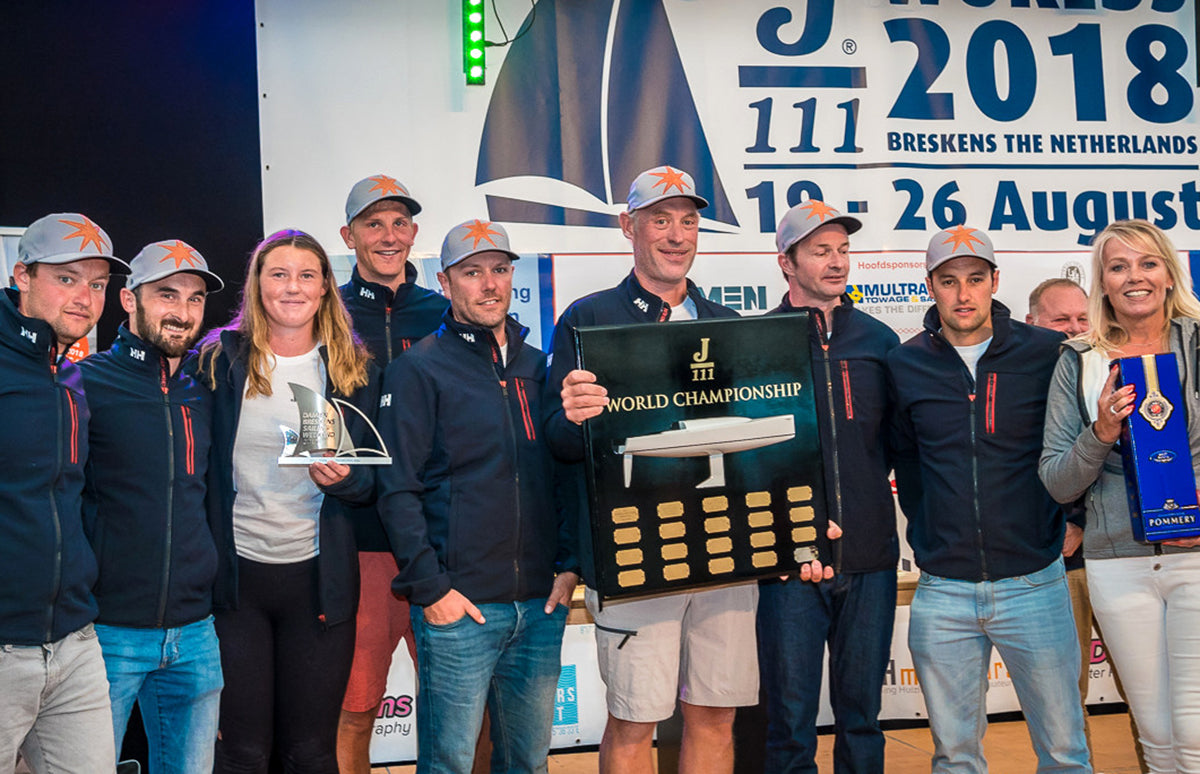J/111 WORLDS: SPEED READING
J/111 WORLDS: SPEED READING
North Experts Share Their Winning Speed Tips

Twelve teams battled throughout the weeklong J/111 Worlds in Breskens, Netherlands, where big-breeze speed was the key to success. Martin Dent and his team on JElvis scored nine straight bullets and a second out of 12 races, an impressive scoreline!
North Sails expert Ruairidh “Rory” Scott , main trimmer and crew captain onboard JElvis, says the team did a great job with boat handling.
“Our crew made sure our hoists, spinnaker jibes and douses were on time and very tidy. This resulted in huge gains and the ability to overtake boats when the pressure was on.”
They also matched headsail choice and mode to the conditions, Rory continues. “Most of the races were on the crossover between the J2 and J3. As the waves got bigger, we felt more comfortable on the J3 as a wider range of steering angles was possible. On Friday the waves were a little smaller and so we went back to the J2, which allowed us to sail a little higher at the same speed.”

Downwind, it was important to sail the correct mode. “We were usually the first boat to sail a higher angle, which was faster downwind. The crossover was around 17 knots, and we also kept the jib up to maximize efficiency. As soon as the wind dropped below 16 for any length of time we would drop the jib and put the bow down.”
North Sails expert Jeremy Smart helped Tony Mack’s McFly finish second overall and kept an eye on JElvis, noticing all the things they were doing right. “Their speed was unmatched as the breeze came up, when boat handling became crucial.”

“The biggest gains were made downwind,” Jeremy continued. “They were able to sail hotter angles to extend, leaving their jib up and maintaining control while planing. Surfing waves was really helpful, which they were very good at, making them unbelievably fast.”
“3Di has a great edge in breeze because it holds its shape very well,” Jeremy added. “Since it doesn’t stretch, the power that is put into the sail is transferred straight into the performance of the boat. The speed is unparalleled.”
JElvis used North Sails standard sail designs for the 2018 Worlds. For more information on our World Championship-winning sails, please contact a North J/111 class expert.
| J/111 World Championship | ||
| 1 | JElvis / Martin Dent | |
| 2 | McFly / Tony Mack | |
| 3 | Sweeny / Paul van Driel | |
| 4 | Lällekönig / Jörg Sigg | |
| 5 | Journeymaker II / Chris Jones | |
| 6 | Djinn / Sebastien de Liedekerke/td> | |
| 8 | Jagerbomb / Paul Griffiths | |
| 9 | Top Job / Norbert Burkert | |




























